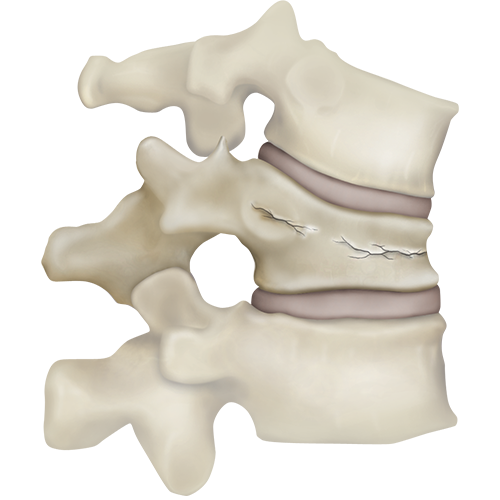

2/3 OF SPINAL FRACTURES GO UNDIAGNOSED AND UNTREATED
Spinal fractures are associated with serious consequences. Fortunately, they can be treated.
FIND A SPECIALISTTREATING SPINAL FRACTURES – KNOW YOUR OPTIONS
Your doctor may recommend conservative measures to manage your pain, especially at first, or may refer you for an interventional procedure called balloon kyphoplasty.
CONSERVATIVE TREATMENT

Measures like bed rest, pain medication, and wearing a back brace (also called Non-Surgical Management or “NSM”) are often recommended to ease pain, but they don’t repair your spinal fracture.
Balloon Kyphoplasty

For broken bones, treatment goals typically include restoring the bone to its correct anatomical position and fixing or “setting” it. Balloon kyphoplasty is a minimally invasive procedure that takes about an hour.
If you have been diagnosed with a spinal fracture caused by osteoporosis, cancer, or benign tumors and have tried bed rest and pain medications, consider a balloon kyphoplasty procedure to repair it.
Learn About The ProcedureHOW BALLOON KYPHOPLASTY WORKS AND WHAT TO EXPECT
Dr. Robert J. Ernst, M.D. , Neurologist from the University of Cincinnati answers your questions.
QUESTIONS ABOUT SPINAL FRACTURES?
Hear what Dr. Douglas Linville II, M.D., Spine Specialty Center, PLLC says about spinal fractures.
TAKE THE QUIZ
Left untreated, spinal fractures can disrupt the alignment of your spine, causing it to tilt forward into what is commonly called a “dowager's hump.” If you’ve lost height or you have a dowager's hump, you may have had spinal fractures.
TAKE THE QUIZPATIENT STORIES
Hear from spinal fracture patients who found relief and improved their quality of life.
SEE PATIENT STORIESInformation on this site should not be used as a substitute for talking with your doctor. Always talk with your doctor about diagnosis and treatment information.